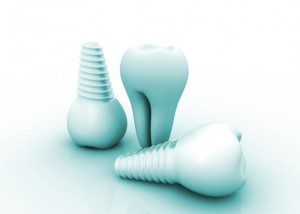 Congenitally missing teeth are one or more teeth that simply never grew. These are often discovered during childhood, as the baby teeth fall out and are replaced by adult teeth. With adult teeth that do not grow in, dental implants may be an option depending on which tooth or teeth are missing and how the missing teeth affect the overall bite and functioning of the jaws.
Congenitally missing teeth are one or more teeth that simply never grew. These are often discovered during childhood, as the baby teeth fall out and are replaced by adult teeth. With adult teeth that do not grow in, dental implants may be an option depending on which tooth or teeth are missing and how the missing teeth affect the overall bite and functioning of the jaws.
In most cases of congenitally missing teeth, the third molars or wisdom teeth are the ones missing. These teeth are typically not necessary, as seen in the number of patients that have them removed for a variety of reasons. Other commonly missing teeth are the second premolars in the lower jaw and the lateral incisors in the upper jaw. Other teeth can be congenitally missing, but these are the most common.
Treating congenitally missing teeth with dental implants is a possible option…
Before a treatment option can be presented, a periodontist must assess the situation and determine that the missing tooth or teeth are indeed congenitally missing. The cause of the missing teeth may be determinable in some cases such as illness, injury, or certain disorders in childhood. There may be a genetic factor causing the missing teeth, or the cause may be indeterminable. After the diagnosis is made, a periodontist can offer treatment options.
Treating congenitally missing teeth with dental implants is a possible option, when the patient is healthy, the gum tissue is healthy, and there is sufficient jawbone to support the implant. If the gum tissue has started receding or the jawbone is insufficient, a tissue or bone graft may be necessary to support the use of a dental implant. After an implant is placed, a custom-made crown is used to create the effect of a replacement tooth to improve function and appearance.
In cases where the missing tooth or teeth are wisdom teeth or where the other teeth have grown to close the gaps and compensate for the missing teeth, if the overall functioning of the other teeth within the jaws is good, treatment for the missing teeth may be inadvisable.
If there is a gap present but the other teeth have moved to partially close the gap, orthodontic treatment may be necessary before pursuing treatment with dental implants.
To learn more about your options, contact the office of Dr. Beth Tomlin today and schedule your informative consultation.






